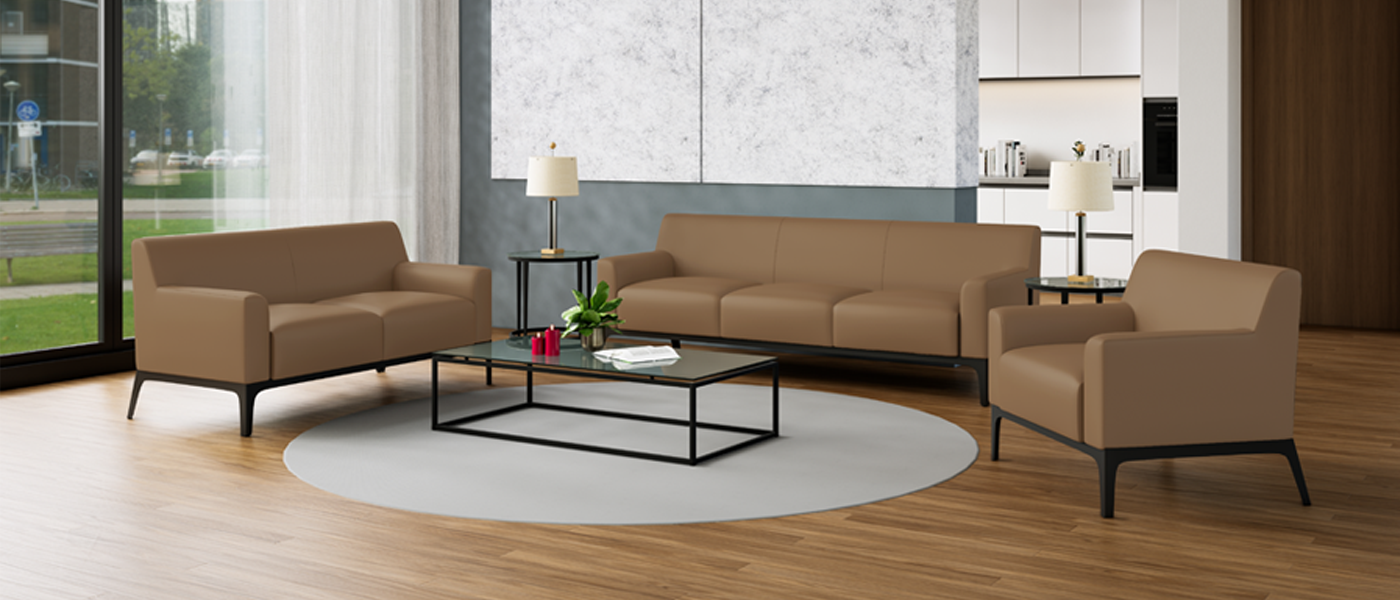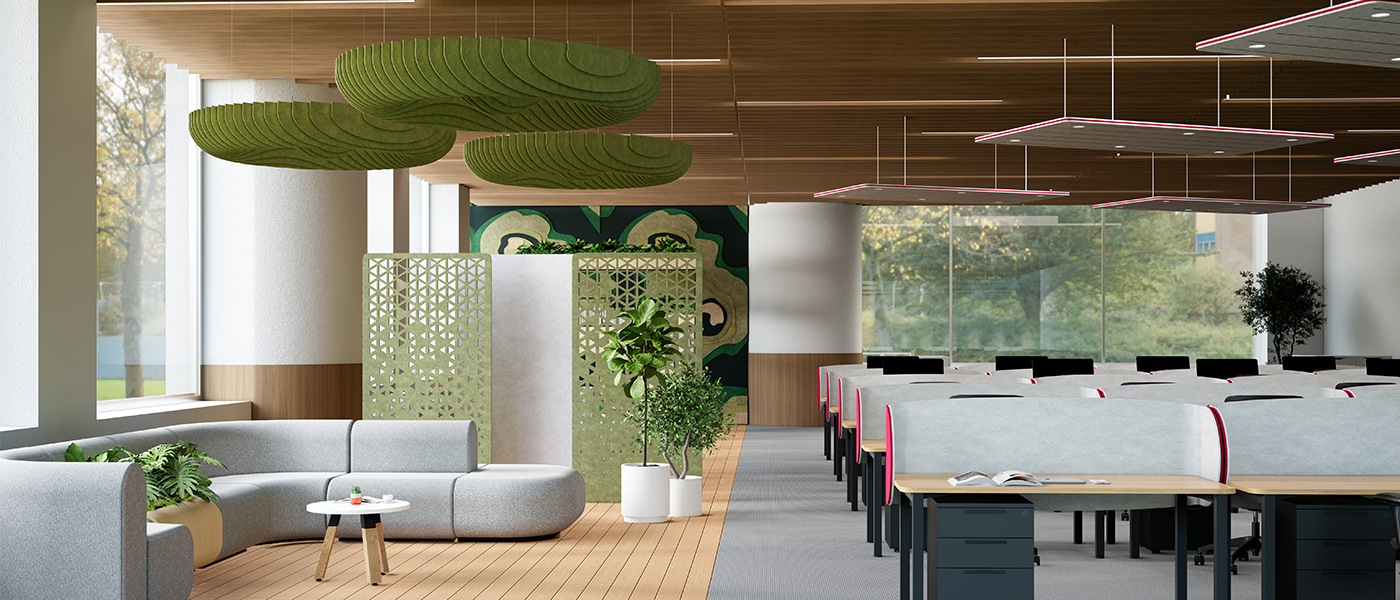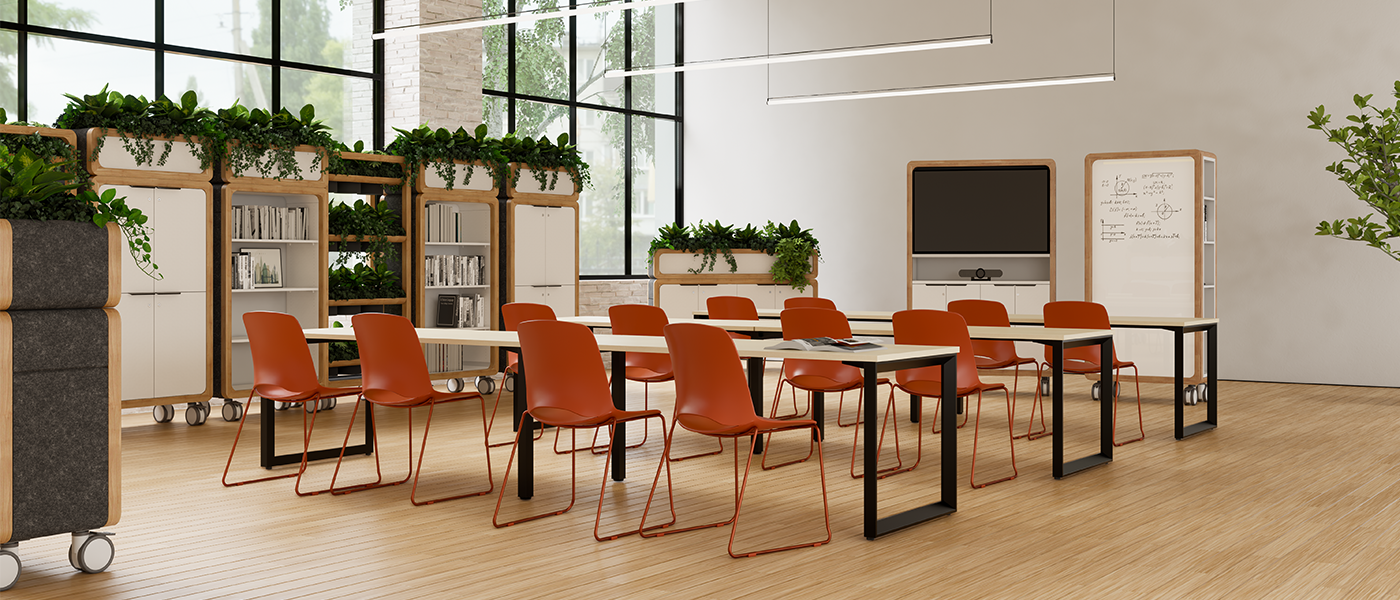Wellbeing at Work: Designing for Mental Health
written by OLG
As conversations around mental health continue to grow, more organisations are recognising that the design of the workplace plays a critical role in employee wellbeing. The way we design and structure our work environments can reduce stress, improve focus, and foster a healthier, more supportive culture.
According to Beyond Blue, one in five Australians experiences a mental health condition each year, and mentally healthy workplaces are not just beneficial, they’re good for business. Organisations that support mental wellbeing see improvements in engagement, performance, and retention.
Designing for mental health requires an intentional blend of spatial planning, sensory comfort, and support for varied working styles. Here’s how key design elements can contribute to a more mentally supportive workplace:
Colour: Set the Mood
Colour influences how we feel in a space. Soft blues and greens can have a calming effect, ideal for focus zones or quiet areas. Yellows and oranges can energise and spark creativity, best used in moderation in collaborative zones.
Neutral bases combined with accent colours reduce visual clutter and avoid overstimulation. According to the Australian Institute of Architects, biophilic design strategies, including nature-inspired palettes, support emotional wellbeing and reduce cognitive fatigue.
Space: A Balance of Privacy and Openness
Modern offices are moving away from a one-size-fits-all model. A mix of open-plan workstations, enclosed meeting rooms, quiet pods, and social spaces allows people to choose environments that suit their focus level or task.
Giving employees some control, whether through adjustable desks, moveable furniture, or personalisation, helps reduce feelings of stress and increases comfort and autonomy.
Lighting: Natural First, Flexible Second
Natural light has a strong link to improved mood and productivity. A number of studies have found that access to daylight and views of nature contribute significantly to psychological wellbeing and job satisfaction.
Where natural light is limited, use artificial lighting that mimics daylight rhythms. Warmer lighting tones in the afternoon can help signal winding down, while cooler tones in the morning promote alertness.
In task-focused areas, give individuals control with dimmable or adjustable lighting to reduce eye strain and improve focus.
Identified Zones: Recharge and Refocus
Quiet zones allow employees to step away from busy environments, supporting mental clarity and reducing stress. These spaces can be used for meditation, deep work, or just a break from constant stimulation.
Use soft finishes, warm tones, plants, and low lighting to create a sense of calm. Flexible furniture layouts allow these spaces to serve different needs throughout the day.
Designing for Downtime
Relaxation spaces support casual conversation, downtime, and microbreaks. Short mental pauses are proven to reduce fatigue. Including lounges, plants, and calming visuals supports a restorative experience.
Indoor plants or views of greenery are more than aesthetic; they’ve been shown to reduce anxiety and increase focus. A range of studies highlights incorporating biophilic elements as a key principle in healthy building design.
Exercise Opportunities
Movement supports not only physical health but also mental clarity and mood. Even without a full gym, employers can incorporate standing desks, walking loops, bike racks, or access to nearby fitness options to promote daily movement.
Putting It All Together: A Holistic Approach
Creating a workplace that supports mental health is not about adding a single wellness room or a few indoor plants. It’s about designing an environment that’s:
- Flexible for different work modes
- Supportive of rest and movement
- Sensory-friendly in lighting, sound, and colour
- Inclusive of privacy and social connection
- Rooted in evidence-based strategies
Workplaces that incorporate these principles not only promote wellbeing but also build a positive culture and higher performance. According to PwC, every $1 invested in mental health initiatives in the workplace delivers a return of $2.30 through improved productivity and reduced absenteeism.
Designing for mental health isn’t just a trend, it’s a responsibility. Through thoughtful choices, employers can create spaces that empower people to work well, live well, and stay well. A workplace that feels good to be in is one that people want to be a part of and that’s good for people and for business.
Click to download a printable PDF.




